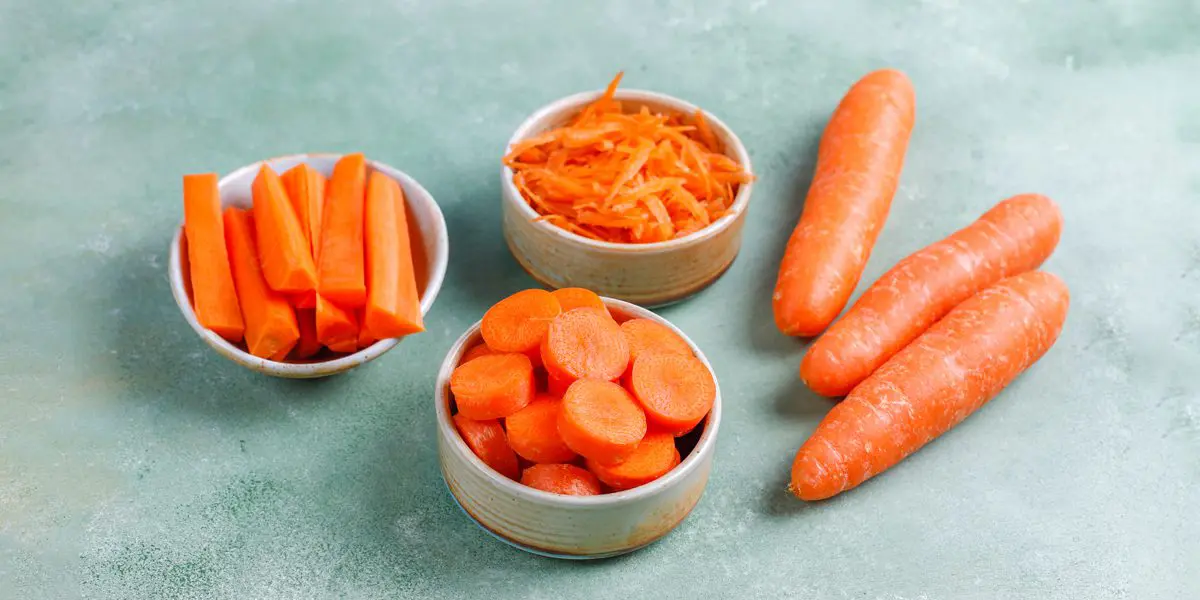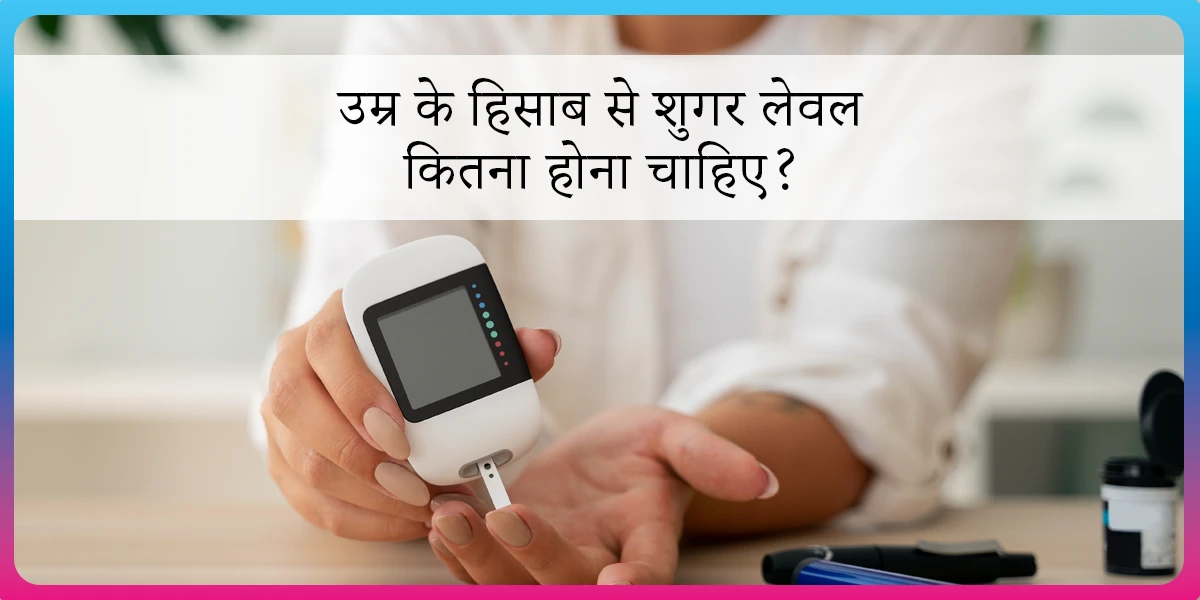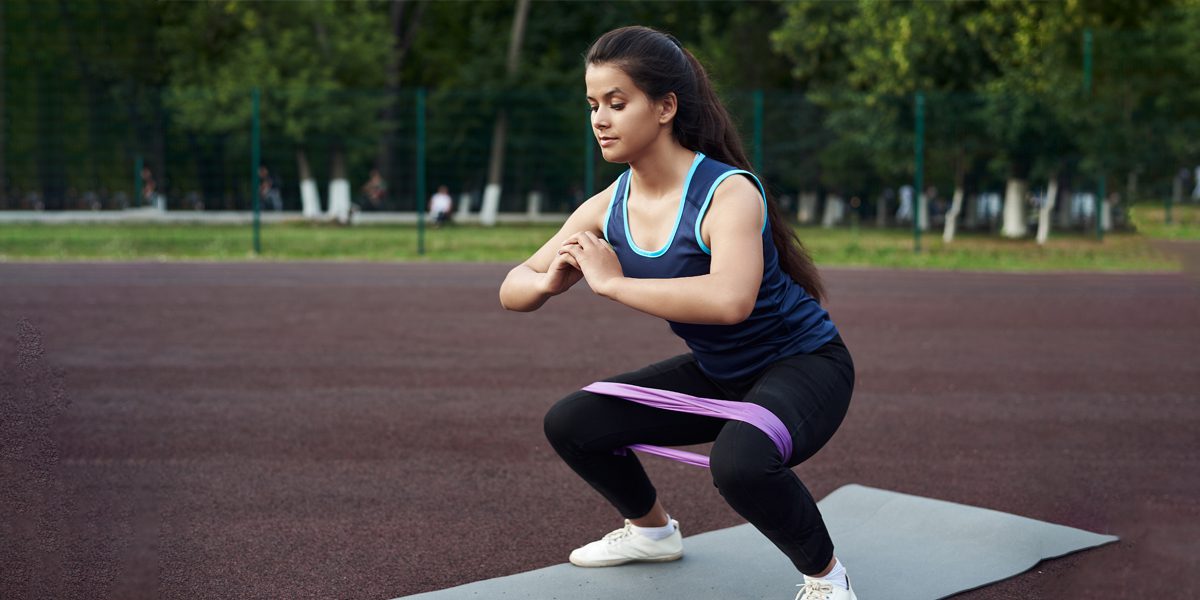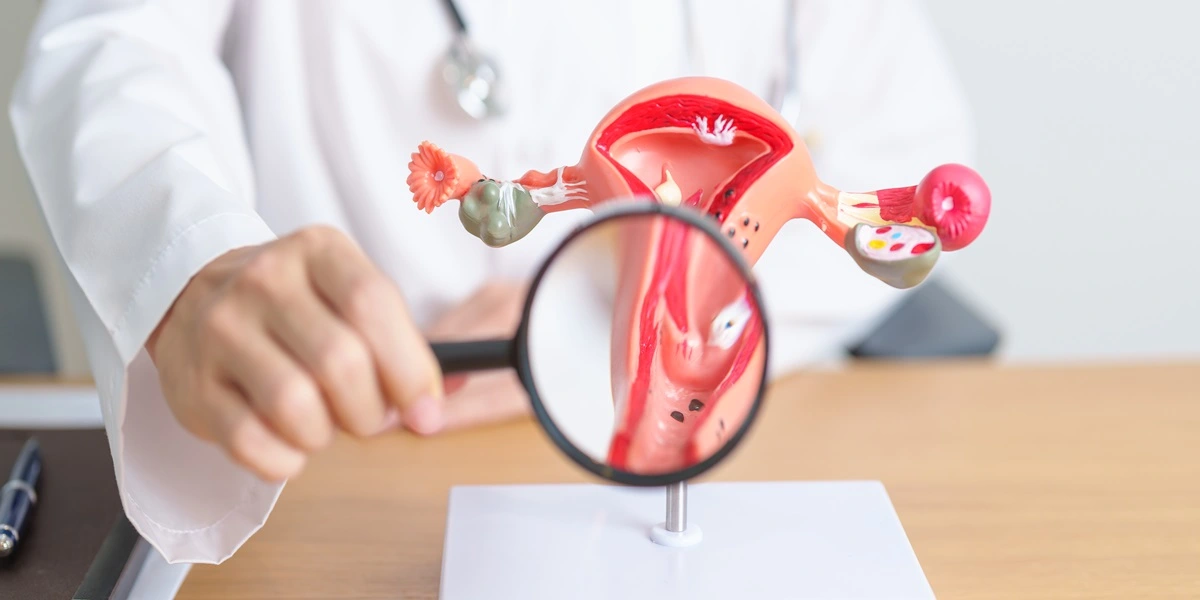Is Carrot Good For Diabetes?

Gajar ka halwaaaaa! ummmmm! Who doesn’t love gajar ka halwa, especially in winter? Carrots are a staple in most Indian households – whether in halwa, sabzi, kootu, poriyals, kurma, sagu, parathas, or even a simple crunchy salad. But if you have diabetes, you might pause before taking a bite and wonder, “Are carrots too sweet for me?”
Carrots often get misunderstood when it comes to diabetes. Some believe they have too much sugar, while others think they’re completely off-limits.
So, should people with diabetes eat carrots? What’s the best way to include them in meals? In this blog, we’ll clear up the confusion and explore the best ways to enjoy carrots while managing blood sugar levels.
To know your chances of Diabetes reversal, take the Diabetes Reversal TestDiabetes Reversal
Calculator
Let’s start by learning about their types and availability.
What are the Types of Carrots Available in Local Markets and Supermarkets?

Carrots come in different colours and flavours, each with its own health benefits. While orange carrots are the most common and easily available in all markets, other varieties like red, purple, yellow, white, and rainbow carrots are also sold in select stores.
However, you may not always find black, yellow, white, or rainbow carrots in regular supermarkets, but they are becoming more common in organic markets, speciality stores, and farmers’ markets.
- The classic orange carrot is long, smooth, and slightly tapered, with a crisp texture and naturally sweet taste. It is the most widely used variety, great for eating raw, cooking, or making juice.
- Red carrots, slightly deeper in colour, look similar to orange carrots but have a more intense sweetness and a juicier bite. They are often used in salads, curries, and even desserts.
- Purple/Black carrots stand out with their dark, almost blackish-purple skin, sometimes with an orange or yellow core. They have a mildly peppery flavour and are packed with anthocyanins, giving them extra antioxidant power.
- Yellow carrots are bright and golden, with a smooth texture and a mild, slightly sweet taste. They are not as common but can sometimes be found in organic or gourmet grocery stores.
- White carrots, on the other hand, lack colour pigments and have a pale, creamy appearance. Their flavour is milder and slightly nutty, making them great for soups and stews.
Despite these many varieties, orange and red ones are more common, readily available, and affordable.
| Dear Reader,
The purpose of sharing details about different carrot varieties isn’t to push you toward expensive or exotic options – it’s to help you realize that nutrition isn’t limited to what’s “trending”. For example, purple carrots have anthocyanins, but so do beetroots and red amaranth leaves (lal maath, lal saag, thandu keerai), which are grown locally and cost far less. The same goes for other vegetables – people chase broccoli, but cauliflower and cabbage offer similar benefits without the hefty price tag. Nature grows food where it thrives best, based on climate and soil. Instead of chasing imported or expensive items, focus on what’s grown in your region – it’s fresher, more sustainable, and just as nutritious. If exotic vegetables fit your budget, great! But if not, remember that local alternatives offer the same goodness – without burning a hole in your pocket. Eat local, eat smart, and make the most of what’s naturally available around you! |
What is the Nutritional Value of Carrots?
| Nutrient | Nutritional Value (per 100 gm) | ||||
| Red Carrot* | Orange Carrot* | Purple/Black Carrot | Yellow Carrot | White Carrot | |
| Energy (kcal) | 38 | 33 | 35 | 36 | 34 |
| Carbohydrates (g) | 7 | 6 | 8 | 7 | 6 |
| Protein (g) | 1 | 1 | 1 | 1 | 1 |
| Total Fat (g) | 1 | 1 | 1 | 1 | 1 |
| Total Fiber (g) | 5 | 4 | 5 | 4 | 4 |
| Beta Carotene (mg) | 3 | 5 | 0 | 0 | 0 |
| Natural Sugars (g) | 4 | 3 | 4 | 4 | 3 |
|
*as per the Indian Food Composition Table (IFCT), 2017 |
|||||
What is the Glycemic Index of Carrots?
The glycemic index (GI) is a measure of how quickly a food raises blood sugar levels after consumption.
- The glycemic index (GI) of carrots depends on how they are prepared and consumed. The GI of carrots is around 39, which is considered low. This means they cause a slow and steady rise in blood sugar, making them a good choice for people managing diabetes or blood sugar levels.
- On the other hand, cooked or mashed carrots have a higher GI, typically ranging from 40 to 85, depending on the cooking method. This is because cooking breaks down the fiber structure, making the natural sugars more available for absorption, which can raise blood sugar more quickly.
- Even though cooked carrots have a slightly higher GI, they are still a healthy food choice when eaten in moderation, as they provide fiber, vitamins, and antioxidants that benefit overall health.
- Pairing carrots with protein, healthy fats, or fiber-rich foods can further help slow down the release of sugar into the blood.
Want diet tips that can help you manage diabetes easily? Consult our expert in-house nutritionists for personalized advice on healthy eating and long-term weight management!
What is the Glycemic Load of Carrots?
The glycemic load (GL) is a measure that considers both the glycemic index (GI) and the carbohydrate content in a typical serving of food. It gives a more accurate idea of how food impacts blood sugar.
Even though cooked carrots have a higher GI than raw ones, their glycemic load remains low because they contain relatively few carbohydrates per serving. For example:
- Raw carrots have a low glycemic load (GL of about 1 to 2 per serving), meaning they have minimal impact on blood sugar levels.
- Cooked carrots, depending on how they are prepared, have a slightly higher GL (around 3 to 4 per serving) but are still considered a healthy choice when eaten in moderation.
Since a GL of 10 or below is considered low, carrots – whether raw or cooked – are unlikely to cause significant blood sugar spikes. Their fiber content helps slow down sugar absorption, making them a nutritious option even for people managing diabetes.
How Can People with Diabetes Include Carrots in Their Diet?
People with diabetes can safely eat carrots by choosing the right portion sizes and pairing them with foods that help balance blood sugar levels. Here are some easy and healthy ways to include carrots in a diabetes-friendly diet:
1. Eat Them Raw for a Healthy Snack
2. Add to Salads for Extra Crunch
Grated or chopped raw carrots can add natural sweetness and crunch to salads. Mix them with leafy greens, nuts, seeds, or cottage cheese for a balanced and filling meal.
3. Roast or Steam Them in Moderation
Cooking carrots can increase their glycemic index, but roasting or steaming them lightly helps keep fiber intact. Toss them with olive oil and spices for a delicious side dish.
4. Blend into Soups and Stir-Fries
Add carrots to vegetable soups, lentil soups, or stir-fries for extra nutrition and flavour. Pair them with proteins like chicken, tofu, or beans to keep meals balanced.
5. Make Carrot-Based Dishes
Try low-carb carrot-based recipes like carrot raita, roasted carrot fries, or carrot-stuffed, mixed veg whole wheat wraps for a nutritious and balanced meal.
| Our expert nutritionists at Fitterfly always advise our program members to avoid carrot juice/smoothie or any type of fruit juice/smoothie. When you juice a fruit, the fiber is removed, which makes the sugar enter your blood faster. This can cause a quick rise in blood sugar levels. Instead, we suggest enjoying fresh fruit in controlled portions to get the full benefits of its nutrients and fiber. |
What are the Health Benefits of Carrots in Diabetes?
Carrots are a great choice for people with diabetes because they help keep blood sugar steady, improve insulin function, and reduce inflammation. Here’s how:
1. Keeps Blood Sugar in Check
- Carrots have a low glycemic index (GI), meaning they don’t cause sudden sugar spikes.
- They’re packed with fiber, which slows down sugar absorption and keeps glucose levels stable.
2. Improves Insulin Function
- Carrots help reduce insulin resistance, making your body use insulin more efficiently.
3. Fights Cell Damage & Inflammation
- Rich in antioxidants, carrots protect your cells from damage caused by high blood sugar.
- They also help reduce inflammation, lowering the risk of diabetes-related complications.
4. Supports Heart & Weight Health
- Carrots help lower bad cholesterol (LDL – Low-Density Lipoprotein) and boost good cholesterol (HDL – High-Density Lipoprotein).
- They’re low in calories and high in fiber, making them great for weight management – an important part of diabetes control.
What are the Other Health Benefits of Different Carrot Types?
Carrots offer a variety of health benefits beyond diabetes management. Different colours provide unique nutrients that support vision, heart health, immunity, digestion, and brain function.
Eating a mix of carrot types can help boost overall well-being. Here’s how each one benefits the body:
1. Orange Carrots
- Promotes eye health and supports immune function.
- Improves skin health and reduces oxidative stress.
- Helps lower the risk of heart disease.
2. Red Carrots
- Lowers the risk of heart disease and certain cancers.
- Protects skin from UV damage and improves elasticity.
- Enhances blood circulation and cardiovascular health.
3. Yellow Carrots
- Protects eye health and reduces the risk of macular degeneration.
- Lowers the risk of atherosclerosis and supports brain function.
- Has anti-inflammatory properties, benefiting joint and bone health.
4. Purple/Black Carrots
- Reduces inflammation and helps with arthritis.
- Supports brain health, potentially lowering the risk of Alzheimer’s disease.
- Improves heart health and cholesterol levels.
- Has antimicrobial properties that benefit gut health and fight infections.
4 Super Easy to Make Diabetes-Friendly Recipes
Here are a few carrot recipes. Not only are these easy to make and healthy, but your entire family will also love these delicious recipes and benefit from their health value.
1) Roasted baby carrots
You will need
- Small-sized baby carrots – you can eat with or without peel
- Olive oil/coconut oil
- Any diabetes-friendly sweetener
- Chopped fresh pudina leaves or mint leaves, or chopped fresh dhaniya leaves or coriander leaves
How to make
- Preheat the oven or microwave to about 220 degrees C.
- In a bowl, add the carrots and add olive oil over them so that all the carrots and the oil mix well.
- Now, take a baking sheet and place the carrots on the sheet.
- Bake the carrots for about 15 to 20 minutes so that the carrots turn tender.
- Now take out the carrots, place them in a bowl and add the artificial diabetes-friendly sweetener.
- Garnish with the tulsi leaves or the dhaniya leaves.
2) Gajar ka paratha
You will need
- Grated carrot
- Gehun ka atta or whole wheat mixed atta
- Chopped green chillies
- Chopped onions
- Chopped dhania patta or chopped coriander leaves
- Grated adrak or ginger
- A little bit of ghee
- Salt as per taste
- Water for kneading the atta
How to make
- Mix all the ingredients in a big bowl and make the dough.
- Break out the dough into small parts to make small balls out of each for separate parathas.
- Roll out the dough balls to make a circular shape.
- Heat a pan and place the rolled-out dough on the pan.
- Let it roast from one side and then turn to roast the other side.
- Now, take a little ghee for greasing and put it on one side of the parantha.
- Let it turn golden brown and turn the parantha, greasing the other side too.
- Once both sides are golden brown, take it off the heat and serve with dahi or curd.
3) Gajar methi sabzi
You will need
- Diced carrots
- Chopped methi patta/chopped methi leaves
- Oil
- Saabut jeera/cumin seeds
- Chopped green chillies
- Chopped onions
- Chopped lehsun/garlic
- Haldi powder/turmeric powder
- Dhaniya powder/coriander powder
- Salt as per taste
- Water
How to make
- Heat oil in a pan and add the saabut jeera.
- As the seeds start to crackle, add the onions and saute for about a minute on medium flame.
- Now add the green chillies and the garlic and mix well. Stir for another minute.
- Now add the methi leaves, haldi powder, and dhaniya powder and mix everything well.
- Cook on a medium flame for 1 to 2 minutes and keep stirring so that it does not get burnt.
- Now add the carrots and salt and mix everything well.
- Close the lid and cook for about 2 to 3 minutes.
- Now add some water to cover the sabzi and cook with the lid closed for about 8 to 10 minutes or till the carrots turn tender.
- You can serve this sabzi with brown rice or with whole wheat roti or parantha.
4) Gajar and garlic chutney
You will need
- Peeled and grated carrots
- Lehsun or garlic
- Chopped green chillies or red chili powder
- Lemon juice
- Grated ginger
- Salt as per taste
- Some water
How to make
- Put all the ingredients in a blender and grind to a smooth paste.
- Taste and adjust salt as required.
- Now take it out of the blender and place it in a glass jar. You can refrigerate this for an hour or so before serving.
Want more easy-to-make recipes that help you manage diabetes, along with simple tips to make your meals healthier? Consult our expert nutritionists for personalised 1-on-1 guidance. They will help you with recipes, diet plans and eating tips that will work perfectly for your current health condition.
How Many Carrots Can a Person with Diabetes Eat a Day?
You can have carrots in your salads with every meal. Or you can include a portion of it in the form of sabzi in your diet in a small to medium bowl.
However, we would suggest that you check this first with your doctor or your nutritionist and understand what the best portion size is for you. You can use the Fitterfly Metabolic Health App to track your calorie intake, macronutrients, and micronutrients.
Are There Risks to Eating Carrots for Diabetes?
- Carrots are generally safe and good for people with diabetes because they don’t cause big spikes in blood sugar. Even though they contain natural sugars, their glycemic load is low, meaning they won’t quickly raise blood sugar levels.
- Raw carrots are the best option since they have a low glycemic index (GI of 16 to 41), while cooked carrots have a slightly higher GI but are still a healthy choice in moderation.
- The main thing to watch out for is portion size. Eating too many carrots or drinking carrot juice can lead to higher sugar intake since juicing removes fiber, making sugars easier to absorb.
- To keep blood sugar stable, it’s best to eat carrots with proteins, fiber, or healthy fats like nuts or yoghurt/curd. Overall, carrots are a nutritious, fiber-rich vegetable that can be part of a diabetes-friendly diet when eaten in the right amounts.
How We at Fitterfly Can Help You?
Managing diabetes doesn’t mean giving up your favourite foods – it’s about making smart choices and understanding what works for your body. At Fitterfly, we help you build a diet that’s not just healthy but also practical and enjoyable.
Our Nutrition Coaches guide you on how to include foods like carrots in your meals without worrying about sugar spikes. We focus on portion control, food combinations, and meal planning so you can eat well without restrictions.
Our Fitness Coaches help you stay active with simple, effective exercises that support better blood sugar control. And with the help of our Success Coaches, you’ll stay motivated, build healthy habits, and handle cravings without guilt.
With the Fitterfly app, you can track your meals, monitor your sugar levels, and get expert advice – all in one place.
Diabetes is about balance, not deprivation. If you want to manage your blood sugar while still enjoying your food, give us a missed call at 08068507599, and let’s make diabetes management easier for you!
Reduced diabetes medications in 3 months


6.8%
Happy members
EMI
Guarantee
4.8/5
Diabetes Prime Program
This blog provides general information for educational and informational purposes only and shouldn't be seen as professional advice.
Frequently Asked Questions
Do carrots raise blood sugar?
Carrots are a type of non-starchy vegetable that will not lead to a steep blood sugar spike. Especially when eaten in the right combination.
Is carrot juice good for diabetes?
When you juice a carrot, its GI score rises to about 43. Which is higher than when eating them in their natural form. However, juicing vegetables and fruits deprives them of fiber and nutritional content and therefore it is best to consume them in their natural form in a salad. Rather than juicing it.
Are carrots and beetroot good for diabetes?
Both carrot and beetroot have a good amount of dietary fiber, which makes them a good choice for those who have diabetes when eaten in moderation.
Are cooked carrots good for people with diabetes?
Yes, eating cooked carrots is good for those who have diabetes, because the GI score in a medium-sized boiled or cooked carrot will be between 33 and 49, which keeps it among the low and the medium range on the glycaemic index scale. As a result, eating cooked carrots is safe to eat for those who have diabetes.
Are orange carrot good for diabetes?
If you are wondering whether orange carrot is good for diabetes or not, the answer is, when eaten in moderation, having orange carrots is good for diabetes. This is because the orange color in the carrot comes from a healthy amount of beta-carotene that gives the orange carrot its color, and these help in giving you a good dose of vitamin A, which in turn can help you keep your diabetes health in check.
Are red carrots good for diabetes?
When you eat it in moderation, it is safe to have red carrots for those who have diabetes. This is because the red color in the carrot comes from a healthy amount of beta-carotene that gives the red carrot its color. Beta carotenes help to give you a good dose of vitamin A, which in turn can help you keep your diabetes health in check.
Are carrots good for prediabetes?
Yes! Carrots have fiber, vitamins, and a low glycemic load, making them a great choice for managing blood sugar in people with prediabetes.
Do carrots have a lot of sugar?
Not really. A medium carrot has about 4 to 6 grams of natural sugar, which is much lower than most fruits. Their fiber content helps slow down sugar absorption, keeping blood sugar levels steady.
Can diabetics eat carrots raw?
Yes! Raw carrots are the best choice because they have a low glycemic index (16-41), meaning they don’t cause sudden blood sugar spikes.
Are carrots and beetroot good for diabetes?
Carrots are great for diabetes due to their low glycemic load. Beetroots have more natural sugar and a moderate GI, so they should be eaten in smaller portions.
Is black carrot good for diabetes?
Yes! Black carrots are packed with anthocyanins, which help reduce inflammation, improve insulin function, and regulate blood sugar.
What are the benefits of black carrots?
Black carrots have strong antioxidants, support heart health, improve digestion, and may help control blood sugar.
What is the sugar content of carrots?
Carrots contain 4 to 6 grams of natural sugar per 100g, but their low glycemic load prevents major blood sugar spikes.























